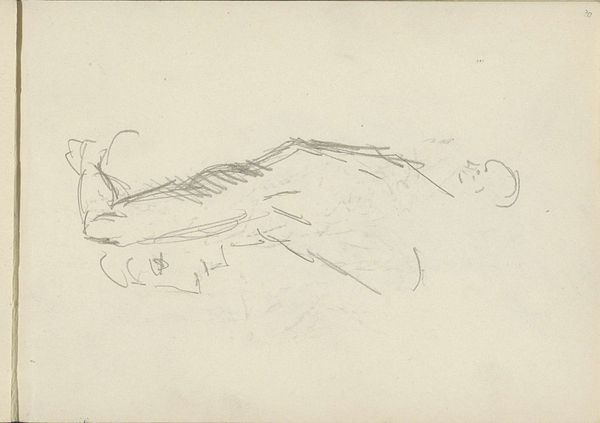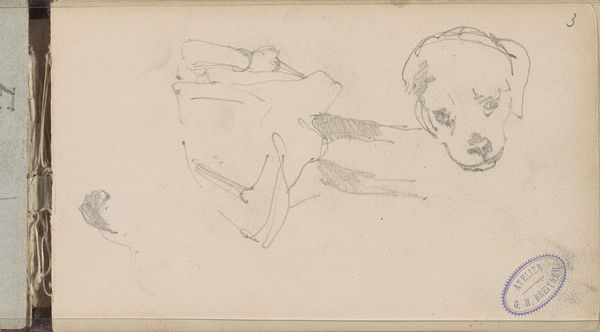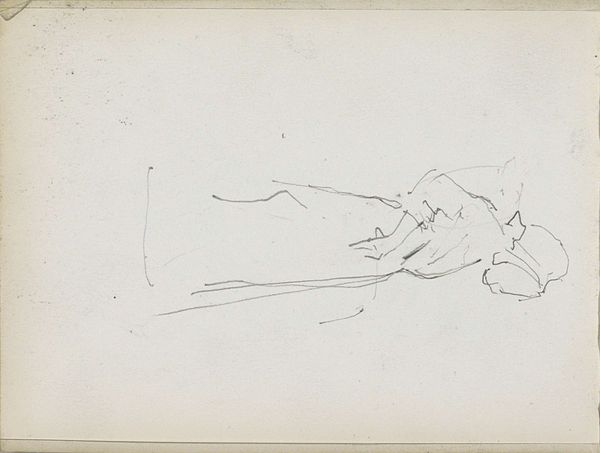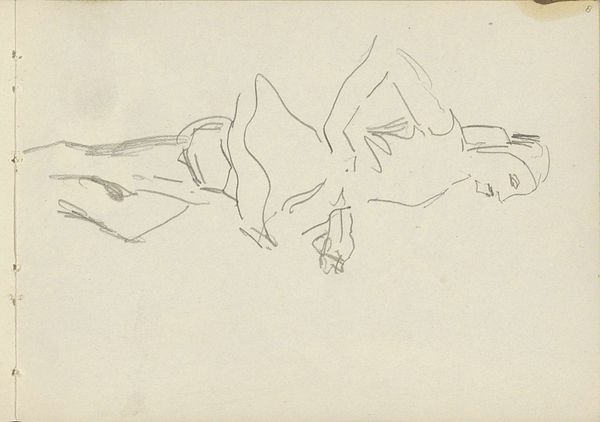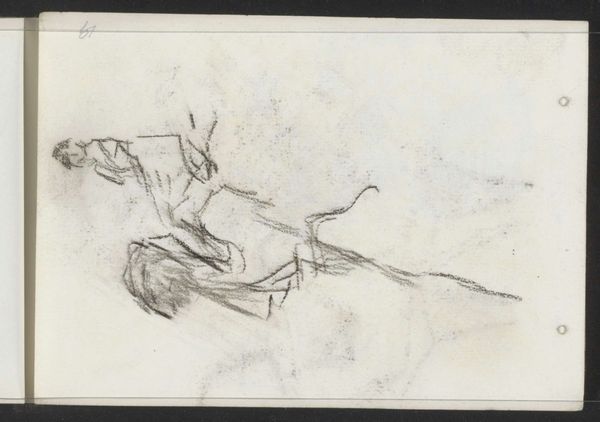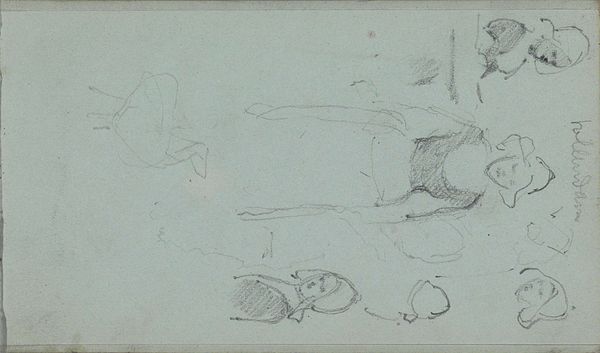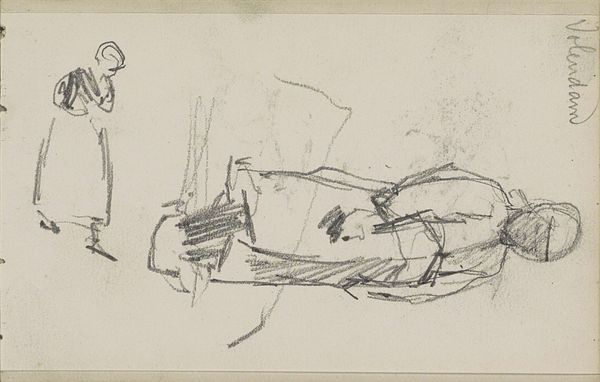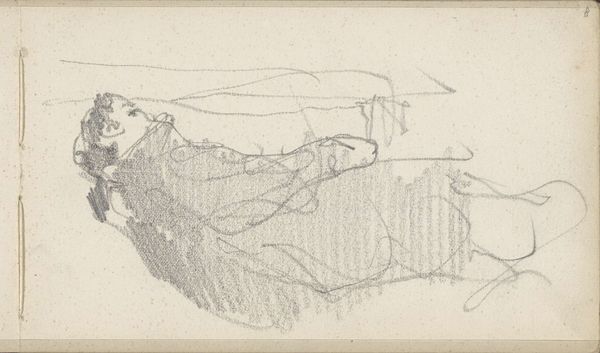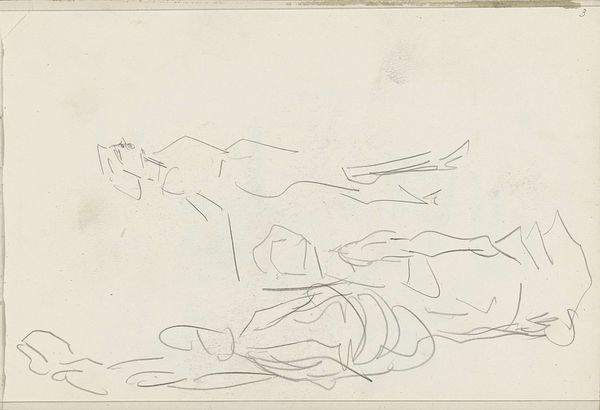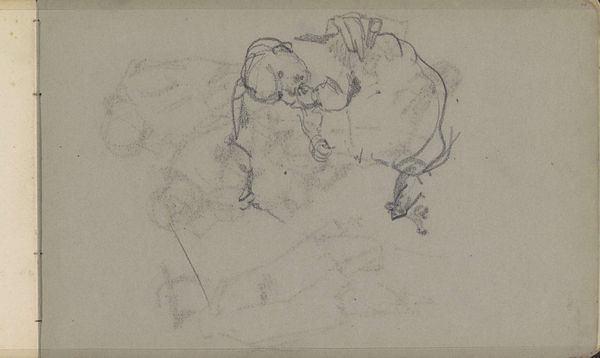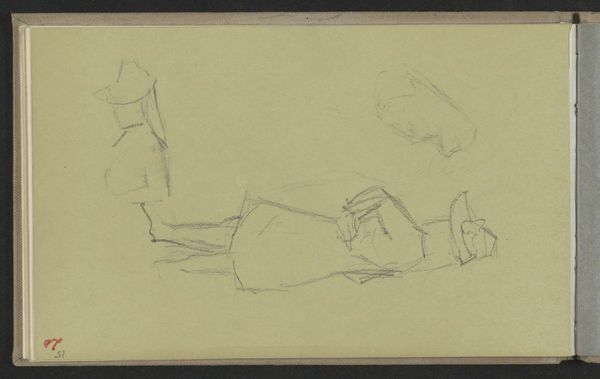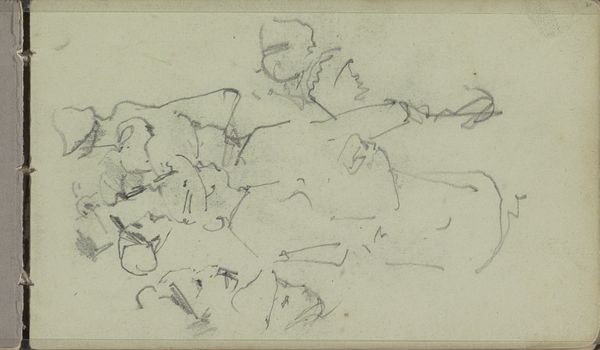
drawing, paper, pencil
#
portrait
#
drawing
#
amateur sketch
#
toned paper
#
light pencil work
#
quirky sketch
#
impressionism
#
incomplete sketchy
#
paper
#
personal sketchbook
#
ink drawing experimentation
#
pen-ink sketch
#
pencil
#
sketchbook drawing
#
sketchbook art
#
realism
Copyright: Rijks Museum: Open Domain
Editor: This is "Woman, Seen From the Back," a pencil drawing by George Hendrik Breitner, made between 1881 and 1883. It feels so fleeting and intimate, like a stolen glance. What do you see in this seemingly simple sketch? Curator: The quick, light pencil work captures a raw vulnerability, doesn’t it? The averted gaze, the turned back…it’s a figure retreating, yes, but from what? Perhaps societal expectations of the time. Consider the role of women then – often confined, observed. This sketch almost inverts that, presenting a private moment, free from the male gaze in a sense. Editor: That’s interesting. So the woman's position is symbolic of something deeper? Curator: Precisely. The lack of detail forces us to project our own experiences and understandings onto her. What does it mean to turn away? Is it resistance? Resignation? Or simply a moment of quiet contemplation? Breitner leaves it open, allowing the viewer to complete the narrative. The sketch itself becomes a kind of mirror, reflecting back our own assumptions. Editor: I never considered it that way before. It's not just a portrait, it’s a symbol. Curator: Exactly! Art often operates on many layers simultaneously. Think about the light pencil work. In what way could that style hint towards an internal state of this woman? Editor: It's ephemeral, transient. Almost as if she might disappear. I'll definitely look at sketches differently from now on. Curator: Wonderful! And that's how a simple sketch can speak volumes, if you listen closely.
Comments
No comments
Be the first to comment and join the conversation on the ultimate creative platform.

